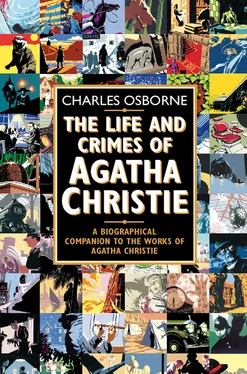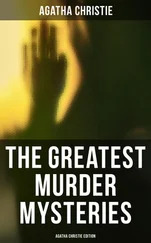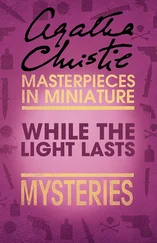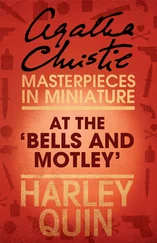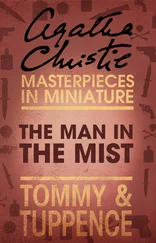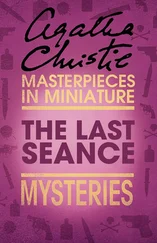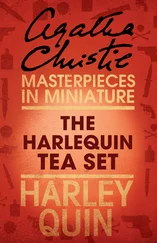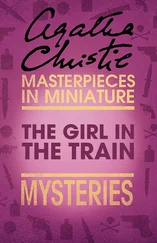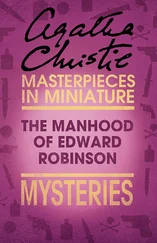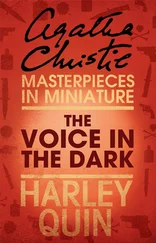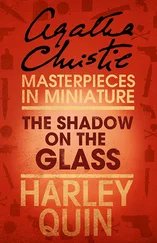Without the self-imposed restraints of the mystery novel, Mrs Christie might easily have found herself floundering and confused, but she did not. She found, instead, that she was not only a brilliant creator of puzzles but also a real novelist, with an ability to create fully rounded characters and with the confidence not to worry about the exigencies of plot. Giant’s Bread is, in a sense, autobiographical, as is all good fiction. And, for that matter, all bad fiction. Human beings are condemned to tell the truth about themselves, though some find oddly devious ways of doing so. Later Mary Westmacott novels will wear their autobiographical aspects on their sleeves, but those truths about Agatha Christie which exist in Giant’s Bread are very deeply embedded within the novel, and are not so much factual as psychological or spiritual. The novel examines a number of characters, but concentrates upon its hero, or anti-hero. Vernon Deyre, whom we meet first as a sensitive child in a sheltered, upperclass environment in Edwardian England, and whose development we follow into adult life.
Vernon becomes a composer, and what is most remarkable about Giant’s Bread is the understanding with which Mrs Christie, despite her disclaiming ‘technical knowledge’, describes the total possession of Vernon’s personality by music. She has created a totally believable composer, believable not simply because Vernon flings the right names about – Prokofiev, Schoenberg, Stravinsky, even ‘Feinberg’ 9 Конец ознакомительного фрагмента. Текст предоставлен ООО «ЛитРес». Прочитайте эту книгу целиком, купив полную легальную версию на ЛитРес. Безопасно оплатить книгу можно банковской картой Visa, MasterCard, Maestro, со счета мобильного телефона, с платежного терминала, в салоне МТС или Связной, через PayPal, WebMoney, Яндекс.Деньги, QIWI Кошелек, бонусными картами или другим удобным Вам способом.
– but because his own music, experimental and avant garde, is convincingly described and because his total absorption in music is so clinically and unromantically conveyed. Vernon Deyre could be Bliss or Goossens or an anglicized Scriabin. In fact, although Vernon is not based on any real person, Mrs Christie was helped by Roger Sacheverell Coke, a seventeen-year-old pianist and composer whose parents were friends of her sister. (Roger Coke studied composition under Alan Bush, and went on to compose an opera on Shelley’s The Cenci, several symphonies and concertos and a great deal of chamber music. Coke’s music, most of which has not been published, is thought to be pre-Debussian in idiom, and so not at all like the music of Agatha Christie’s Vernon Deyre.)
Giant’s Bread contains fascinating portraits of an opera soprano who loses her voice by insisting on singing Strauss’s Elektra, a role too strenuous for her, and of an impresario, Sebastian Levinne, a friend of Vernon’s since their childhood, and ‘the sole owner of the National Opera House’. Although, in the prologue to the novel in which a new opera is having its première at the National Opera House, Sebastian is referred to by a member of the audience as ‘a dirty foreign Jew’, Mrs Christie has produced in Levinne and his parents an unexpectedly sympathetic and understanding portrait of a Jewish family coping with genteel English upperclass resentment and prejudice.
It is the apparent ease with which Agatha Christie was able, in Giant’s Bread, to examine various aspects of human behaviour that is impressive, rather than the actual quality of her writing, though her prose is never less than adequate to convey mood and meaning. She was always too fond of the verb ‘to twinkle’: Poirot’s and Miss Marple’s eyes are forever twinkling as they make their little jokes, and in Giant’s Bread there is a pianist whose hands ‘twinkled up and down the keyboard’ with marvellous speed and dexterity. But for the most part Mrs Christie’s first ‘straight’ novel reads very smoothly, and indeed grippingly. If the author’s attitude to some of her characters is romantic, it is never sentimental, and not even romantic in the diminishing sense in which the word is used to denote a blinkered view of reality. Twice in the course of the novel she quotes that greatest of realists, Dostoevsky, and is fully justified in doing so. She even gets away, towards the end, with a scene in which Vernon, shipwrecked, can drag to the safety of a raft, only one of two drowning women, and has to make a choice between his wife and his ex-lover.
Agatha Christie must have known the real worth of her Mary Westmacott novels, and must surely have been disappointed that they did not arouse more interest in the literary world. But when she was interviewed many years later, after it was known that she had written several non-mystery novels, she merely remarked with an ambiguously arrogant modesty: ‘I found with straight novels that they didn’t need much thinking out beforehand. Detective stories are much more trouble – even if you have no high ideals in writing them.’
The Sittaford Mystery Alternative title: Murder at Hazelmoor (1931)
Mr and Mrs Mallowan had bought a house in London, at 22 Cresswell Place, Earls Court, which Agatha completely redecorated, and which contained a music room on the top floor where she could both write and play the piano. They also kept up Ashfield, the house in Torquay, where Agatha loved to go during the summer holidays when Rosalind was home from school. After their honeymoon, Agatha spent the winter of 1930–31 in London while Max was at Ur, and it was not until March that she joined him at Ur for a few days and then travelled home with him.
The journey back to England was an adventurous one. Having decided to go by way of Persia (Iran), the Mallowans flew from Baghdad to Shiraz, via Teheran, in a small, single-engined plane which ‘seemed to be flying into mountain peaks the entire time’. In Shiraz, they visited a beautiful house with a number of medallion paintings on the walls, one of which was of Holborn Viaduct in London! Apparently a Shah of Victorian times, after visiting London, had sent an artist there with instructions to paint various medallions of scenes the Shah wanted to remember, and these included Holborn Viaduct. Agatha Christie used the house as the setting for a short story called ‘The House at Shiraz’, which she included in a volume, Parker Pyne Investigates (1934).
From Shiraz the Mallowans travelled by car to Isfahan, which Agatha maintained to the end of her life was the most beautiful city in the world. Its colours of rose, blue and gold, its noble Islamic buildings with their courtyards, tiles and fountains, the birds and the flowers, all entranced her. They next made a sudden decision to continue their journey home by way of Russia. Hiring a car, they made their way down to the Caspian sea where, at Rasht, they caught a Russian boat across to Baku, capital of the Soviet province of Azerbaydzhan. In Baku, an Intourist agent asked if they would like to see a performance of Faust at the local opera house. They declined, and instead ‘were forced to go and look at various building sites and half-built blocks of flats’. Their hotel was one of faded splendour, but everything in Baku ‘seemed like a Scottish Sunday’. By train, they made their way to Batum on the Black Sea, having been forbidden to break their journey at Tiflis, a town Max Mallowan very much wanted to see. A French ship took them down the Black Sea to Istanbul, where they joined Agatha’s beloved Orient Express.
Читать дальше
